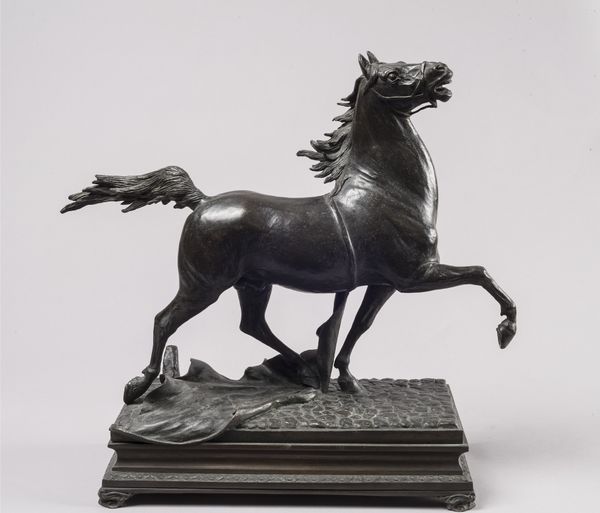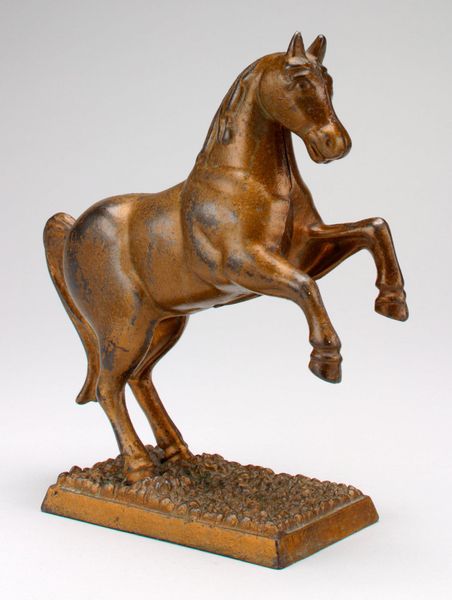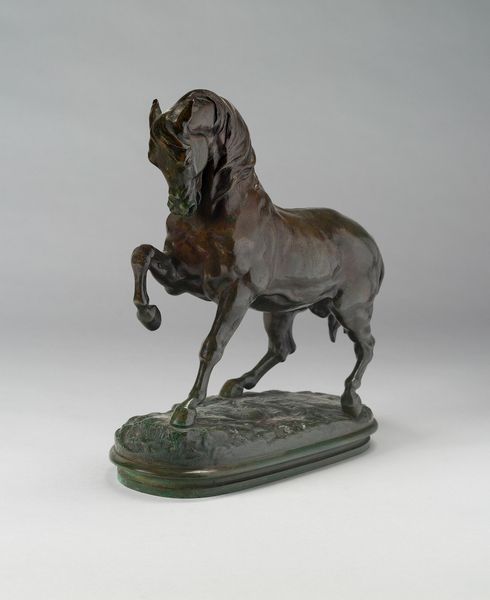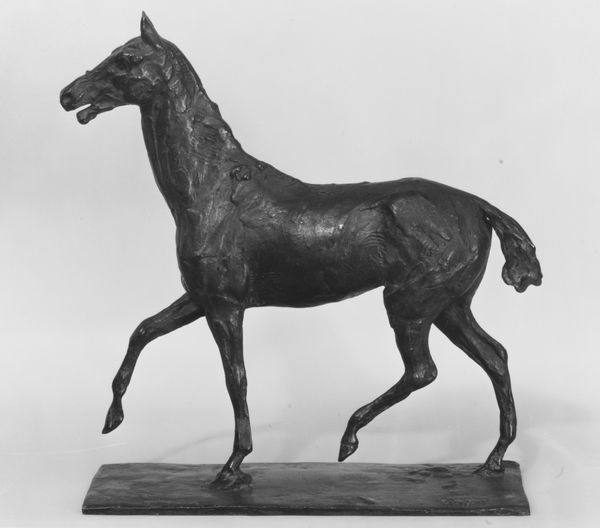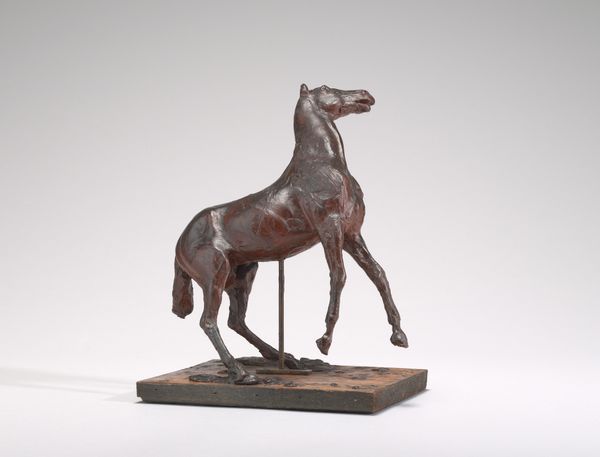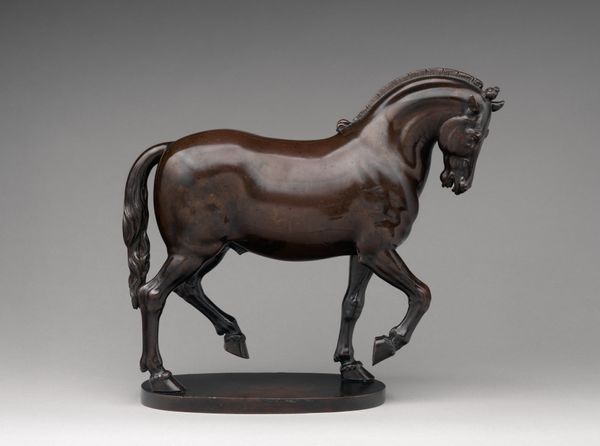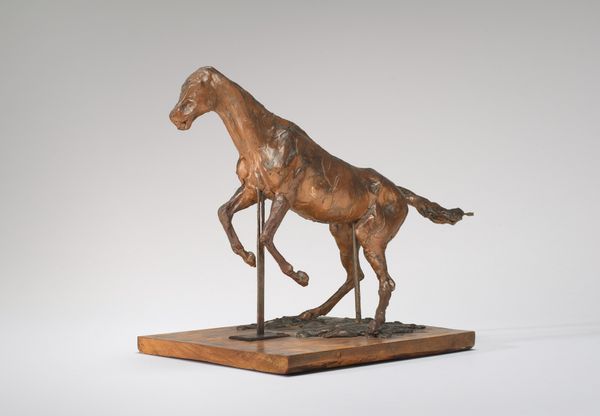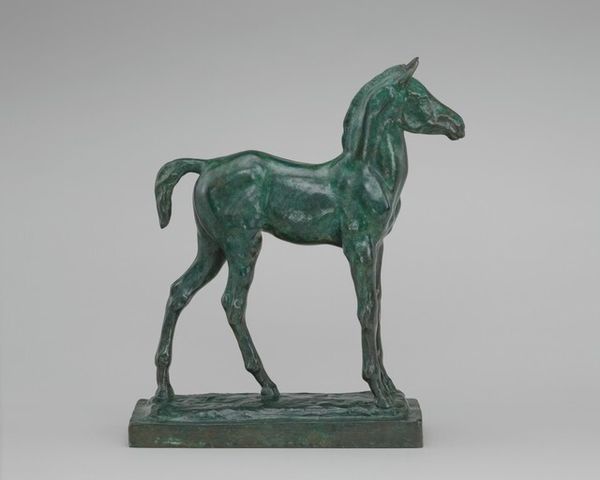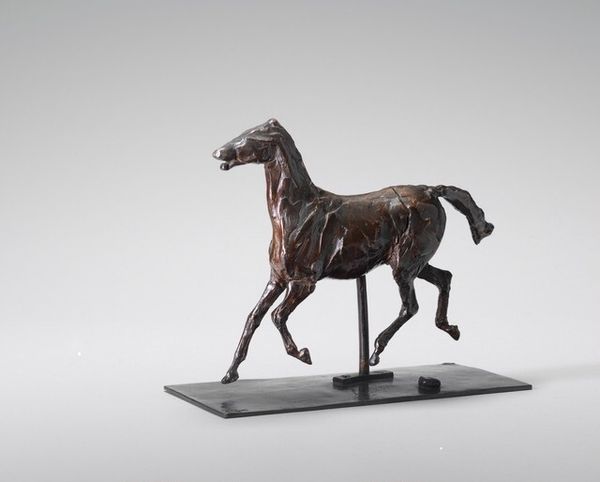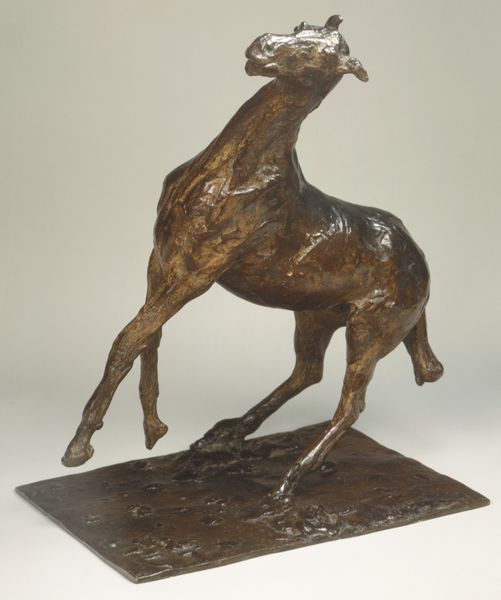
Dimensions: 42 cm (height) x 47.5 cm (width) x 18.1 cm (depth) (Netto)
Editor: Here we have Theodor Philipsen’s “En løs hest,” or “A Loose Horse,” created in 1898. It's cast in bronze and I am immediately struck by its sense of energy and movement, even frozen as it is. What aspects of this piece capture your attention? Curator: Well, I'm drawn to the materiality of the bronze and how Philipsen has worked it. Look at the surface – it's not a smooth, idealized form, but textured and seemingly raw. It reveals the artist’s hand and the labor involved in its creation. Consider the historical context: bronze casting was often associated with monumental, heroic figures, but here, we have an everyday scene. Editor: I see what you mean. It’s a working animal, not a war horse or symbol of status. Curator: Precisely! Think about the means of production too. Where was this cast? Who were the laborers involved? And what does the choice of bronze, a relatively expensive material, suggest about the intended audience or patron? Was this meant for public display or private collection? Editor: So you're saying that by examining the materials and production process, we can learn about the society and economy that shaped this work. Curator: Exactly. It pushes us to reconsider what "high art" could be at the time and whose stories get told through sculpture. Do you think its realistic style contributed to this? Editor: I think so, it isn't overtly glorifying its subject in any way, which gives more room to analyzing it like you suggest. I hadn't considered that! Thanks for sharing. Curator: It's all about peeling back the layers and looking at the conditions that gave rise to it. I'm glad I could give a new way to appreciate it.
Comments
No comments
Be the first to comment and join the conversation on the ultimate creative platform.
